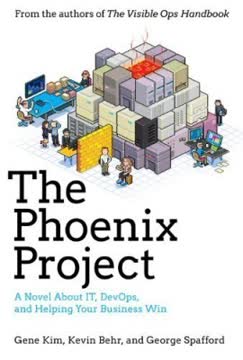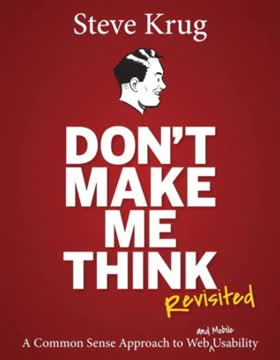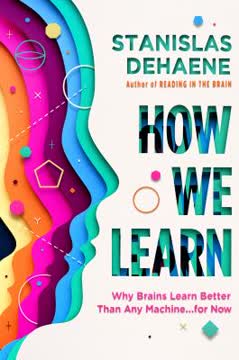Key Takeaways
1. Embrace creative thinking to unlock innovative solutions
"To get ideas, you have to get your imagination to ask, 'What if?'"
Cultivate a creative mindset. Creative thinking is not a magical gift, but a skill that can be developed through practice and intention. To foster creativity:
- Question the status quo and look for novel approaches
- Expose yourself to diverse experiences and perspectives
- Set aside time for unstructured thinking and daydreaming
- Embrace failure as a learning opportunity
Use creative thinking techniques. Employ structured methods to generate innovative ideas:
- SCAMPER: Substitute, Combine, Adapt, Modify, Put to other uses, Eliminate, Reverse
- Forced connections: Link unrelated concepts to spark new ideas
- Mind mapping: Visually organize thoughts to reveal new connections
- Random stimulation: Introduce unrelated elements to provoke fresh thinking
2. Challenge assumptions and reverse conventional wisdom
"Sometimes assumptions seem so basic, so fundamental, that we never think to challenge them."
Identify and question assumptions. Our assumptions often limit our thinking without us realizing it. To break free:
- List all assumptions related to your problem or goal
- Ask "Why?" repeatedly to uncover deeper assumptions
- Seek out diverse perspectives to challenge your viewpoint
Reverse thinking. Flip conventional wisdom on its head to reveal new possibilities:
- State the opposite of your assumptions
- Ask "What if?" questions to explore reversed scenarios
- Look for examples where the opposite approach has succeeded
By challenging and reversing assumptions, you can uncover innovative solutions that others miss. This approach has led to breakthroughs in various fields, from business models to scientific discoveries.
3. Use analogies and associations to spark new ideas
"Analogies are comparisons of the similar features of two things—they are also mental telescopes through which you can spy ideas."
Harness the power of analogies. Analogies allow us to transfer knowledge from one domain to another, revealing new insights:
- Look for similarities between your problem and unrelated fields
- Use natural analogies (e.g., how nature solves similar problems)
- Explore historical analogies to find timeless principles
Practice free association. Let your mind wander to uncover unexpected connections:
- Start with a key concept and rapidly list associated ideas
- Use random words or images as prompts for association
- Create mind maps to visually explore associations
Analogies and associations can lead to breakthrough ideas by revealing hidden patterns and transferring solutions across domains. Many great inventions, from Velcro to computer algorithms, were inspired by analogies to nature or other fields.
4. Harness the power of unconscious thought and intuition
"When you have a case of the dooms about a challenge, incubate it. Then, when you least expect it, in perfect silence, the answer will come like a flock of birds breaking out of a tree."
Leverage incubation. Allow your unconscious mind to work on problems:
- Clearly define the problem, then set it aside
- Engage in unrelated activities to let your mind wander
- Return to the problem after a period of incubation
Trust your intuition. Intuitive insights often emerge from deep pattern recognition:
- Pay attention to gut feelings and sudden insights
- Practice mindfulness to become more aware of intuitive signals
- Balance intuition with rational analysis for best results
The unconscious mind continues to process information even when we're not actively thinking about a problem. By giving your mind time to incubate and trusting your intuition, you can tap into deeper wells of creativity and insight.
5. Visualize and diagram ideas to stimulate creativity
"Graphic ideation (sketching, doodling, or drawing) is complementary to verbal ideation and can help you muster up new ideas."
Use visual thinking tools. Visual representations can reveal patterns and relationships that words alone may miss:
- Mind maps: Create branching diagrams to explore connections
- Sketches and doodles: Quickly visualize concepts and ideas
- Storyboards: Map out processes or scenarios visually
Create idea boards. Collect and organize visual inspiration:
- Gather images related to your problem or goal
- Arrange and rearrange images to spark new connections
- Use digital tools like Pinterest or physical bulletin boards
Visual thinking engages different parts of the brain than verbal thinking, often leading to unexpected insights. Many creative professionals, from designers to scientists, use visual tools to explore and communicate ideas.
6. Collaborate effectively through structured brainstorming
"The clever combatant looks to the effect of combined energy, and does not require too much from individuals."
Establish ground rules. Create a supportive environment for idea generation:
- Defer judgment: No criticism during initial idea generation
- Encourage wild ideas: Outlandish thoughts may spark practical solutions
- Build on others' ideas: Use "Yes, and..." instead of "But..."
Use diverse brainstorming techniques. Vary your approach to maximize creativity:
- Classic verbal brainstorming: Rapid-fire idea sharing
- Brainwriting: Silent, written idea generation
- Round-robin: Each person contributes in turn
- Reverse brainstorming: Generate ways to cause the problem
Effective collaboration can multiply the creative output of a group. By combining diverse perspectives and following structured techniques, teams can generate more innovative solutions than individuals working alone.
7. Continuously refine and evaluate creative ideas
"The best way to get a good idea is to get lots of ideas."
Generate quantity first. Aim for a large volume of ideas before evaluating:
- Set idea quotas to push beyond obvious solutions
- Use time constraints to boost rapid idea generation
- Combine and build upon initial ideas
Develop evaluation criteria. Create a systematic approach to assess ideas:
- Align criteria with your goals and constraints
- Consider feasibility, impact, and originality
- Use techniques like weighted scoring or decision matrices
Iterate and refine. Treat promising ideas as starting points:
- Prototype and test concepts quickly
- Seek feedback from diverse stakeholders
- Continuously improve based on results and new insights
The creative process doesn't end with the first good idea. By generating many options, systematically evaluating them, and iteratively refining the most promising concepts, you can dramatically improve the quality and impact of your creative solutions.
Last updated:
FAQ
What's Thinkertoys about?
- Creative Thinking Techniques: Thinkertoys by Michael Michalko is a comprehensive guide that offers a variety of creative-thinking techniques to help individuals generate innovative ideas.
- Structured Approach: The book is divided into linear and intuitive techniques, providing structured methods like mind mapping and force-field analysis to explore new possibilities.
- Practical Application: Each technique is paired with exercises and examples, making it easy for readers to apply the concepts in both personal and professional contexts.
Why should I read Thinkertoys?
- Enhance Creativity: The book is designed to significantly enhance creative thinking skills, helping readers generate ideas more effectively by breaking down mental barriers.
- Diverse Techniques: It offers a wide range of techniques, ensuring that there is something for everyone, regardless of their preferred thinking style.
- Real-World Examples: Michalko includes numerous examples and anecdotes that illustrate successful application of these techniques, inspiring readers to implement them in their own lives.
What are the key takeaways of Thinkertoys?
- Two Types of Techniques: Creative techniques are categorized into linear and intuitive methods, each serving different purposes in idea generation.
- Importance of Perspective: Changing perspectives is crucial for unlocking new ideas, with techniques like Brutethink and Circle of Opportunity encouraging connections between unrelated concepts.
- Action-Oriented Exercises: The book includes exercises that prompt immediate practice of techniques, reinforcing learning and solidifying concepts.
What is the SCAMPER technique in Thinkertoys?
- Idea Generation Framework: SCAMPER stands for Substitute, Combine, Adapt, Modify, Put to other uses, Eliminate, and Reverse, serving as a checklist to stimulate creative thinking.
- Practical Application: By applying SCAMPER questions to challenges, individuals can uncover new ideas and solutions, such as innovative product designs.
- Versatile Use: This technique is applicable across various fields, encouraging thinking outside the box and exploring unconventional solutions.
How does the Tug-of-War technique work in Thinkertoys?
- Force Field Analysis: It identifies positive and negative forces affecting a challenge, helping strategize on maximizing strengths and minimizing weaknesses.
- Scenario Planning: Users define best-case and worst-case scenarios, aiding in understanding potential outcomes and preparing for various situations.
- Actionable Insights: Analyzing forces at play allows for developing actionable strategies, promoting a proactive approach to problem-solving.
What is the Lotus Blossom technique in Thinkertoys?
- Diagrammatic Approach: This technique involves creating a diagram that expands on a central idea, exploring related themes and sub-themes.
- Structured Exploration: By breaking down a challenge into components, users can systematically generate new ideas and insights.
- Creative Momentum: Expanding outward from a central idea creates momentum, encouraging broad thinking and exploration of possibilities.
How can I apply the Idea Box technique from Thinkertoys?
- Parameter Identification: Identify parameters of a challenge and list variations for each, allowing systematic exploration of potential solutions.
- Combination of Ideas: Randomly select variations from different parameters to generate new ideas, emphasizing the combination of existing concepts.
- Flexibility and Adaptability: Adaptable to various challenges, this technique encourages creative thinking by exploring different combinations.
What is the Brutethink technique in Thinkertoys?
- Random Stimulation: Forces connections between dissimilar concepts to spark new ideas, discovering innovative solutions not apparent otherwise.
- Creative Juxtaposition: Encourages thinking outside conventional boundaries, promoting a playful approach to idea generation.
- Practical Examples: The book provides examples of how Brutethink has led to breakthroughs, demonstrating its effectiveness.
How does the Circle of Opportunity technique work in Thinkertoys?
- Attribute Focus: Isolates specific attributes of a challenge for focused consideration, delving deeper into individual aspects.
- Random Selection: Uses dice to select attributes, generating new ideas through free association and encouraging creative thinking.
- Idea Generation: Promotes exploration of relationships between attributes, leading to innovative solutions by viewing challenges from multiple angles.
What is the Murder Board technique in Thinkertoys?
- Critical Evaluation: A group rigorously evaluates and critiques ideas to expose weaknesses before final approval, ensuring viability.
- Preventing Embarrassment: Thorough critique prevents potential failures and embarrassments from poorly thought-out proposals.
- Encouraging Improvement: Feedback allows for modifications and improvements, enhancing the overall quality of ideas.
How does Thinkertoys suggest using guided imagery?
- Relaxation and Focus: Guided imagery helps relax and focus on challenges, allowing the unconscious mind to generate insights.
- Symbolic Representation: Visualize challenges and seek symbols representing solutions, leading to unexpected connections.
- Recording Insights: Record experiences and insights post-session, as they provide valuable clues for solving challenges.
What are the best quotes from Thinkertoys and what do they mean?
- “Your business attitude determines your potential for innovation.”: Emphasizes mindset's role in fostering creativity and generating innovative ideas.
- “A problem is nothing more than an opportunity in work clothes.”: Reframes challenges as opportunities for growth and innovation.
- “The only crime in life is never having tried.”: Highlights the value of experimentation and risk-taking in the creative process, reminding that failure is part of innovation.
Review Summary
Thinkertoys is highly regarded as a comprehensive guide to creative thinking techniques. Readers praise its practical exercises, real-world examples, and diverse problem-solving approaches. Many find it applicable across various fields, from business to personal development. The book's structure allows for easy reference, with some readers revisiting it frequently. While a few critics find it repetitive or overly business-oriented, most appreciate its potential to unlock creativity and generate innovative ideas. Some readers particularly enjoy the optical illusions and stories included.
Similar Books










Download PDF
Download EPUB
.epub digital book format is ideal for reading ebooks on phones, tablets, and e-readers.




